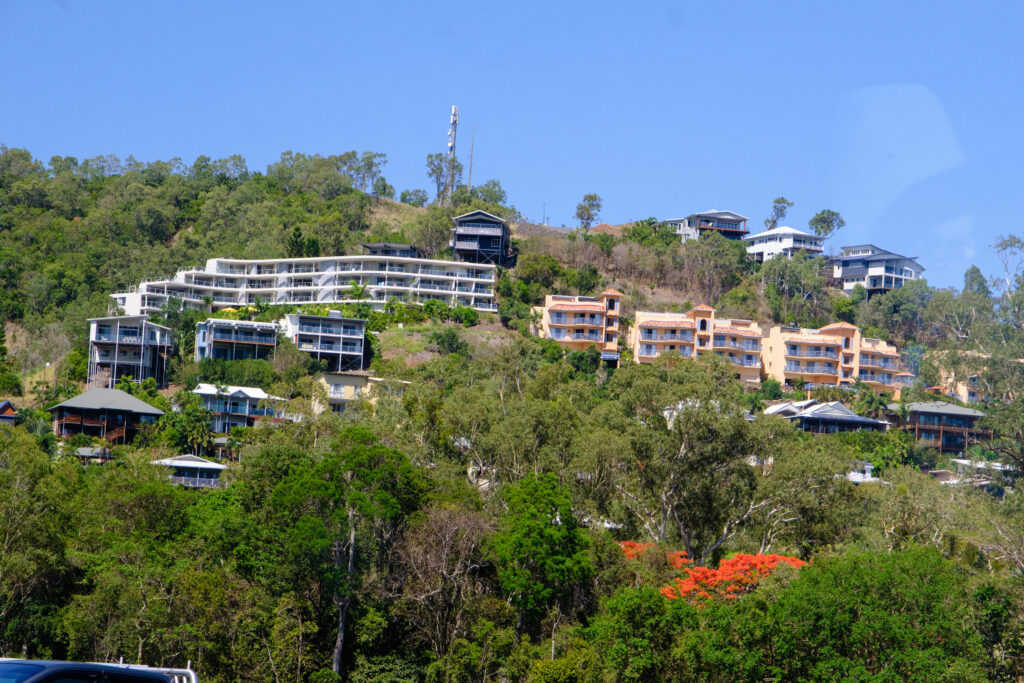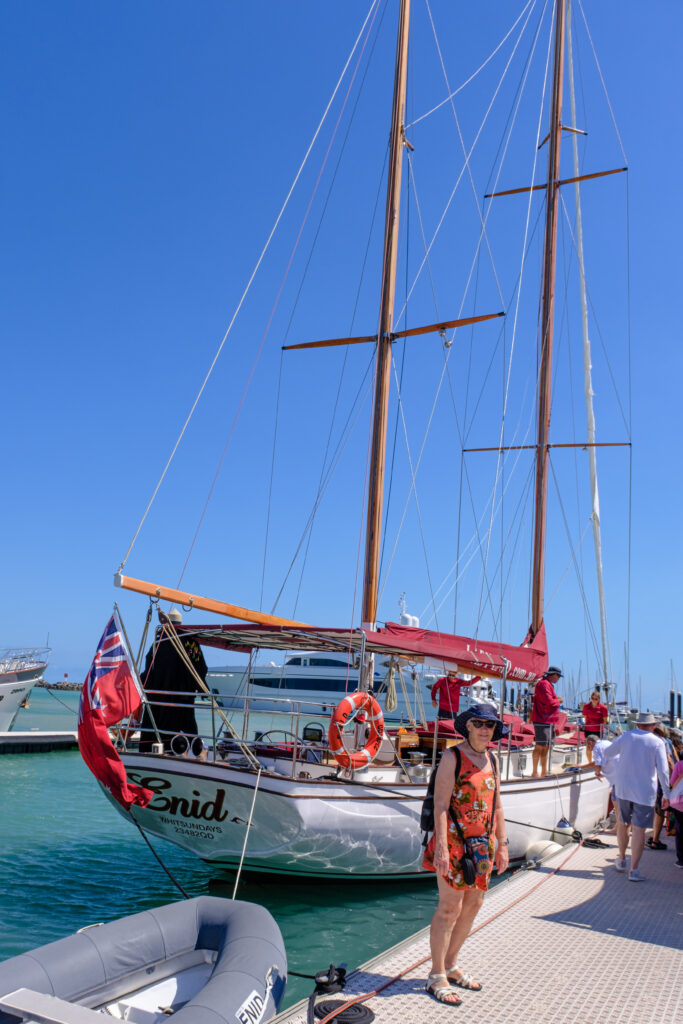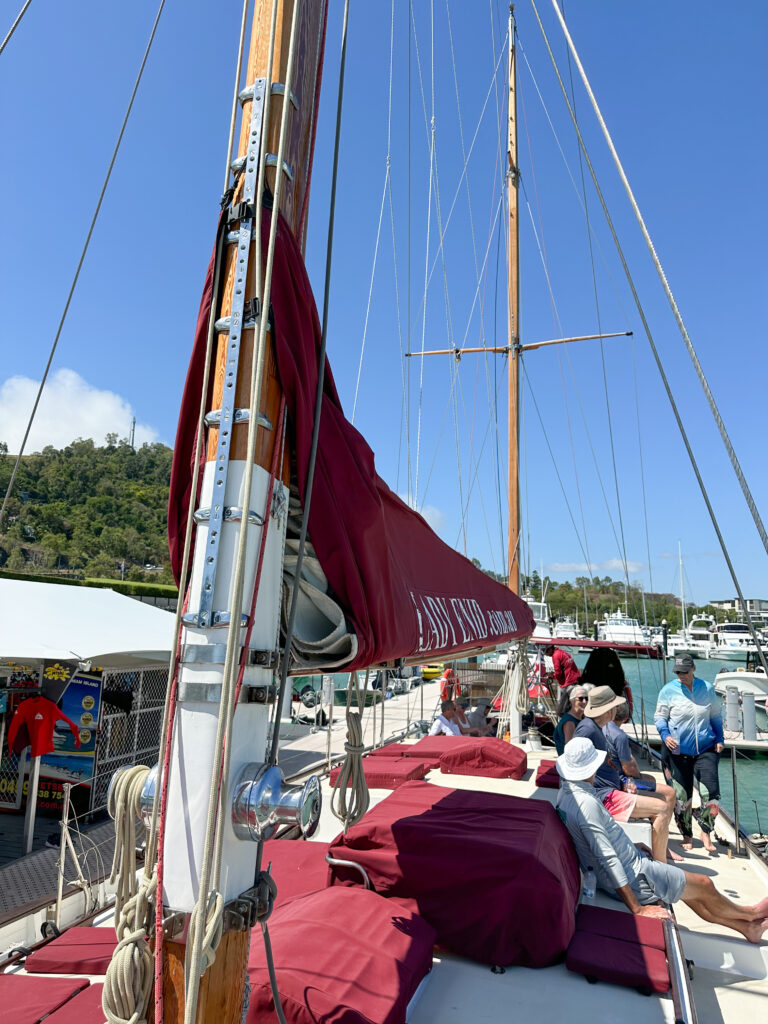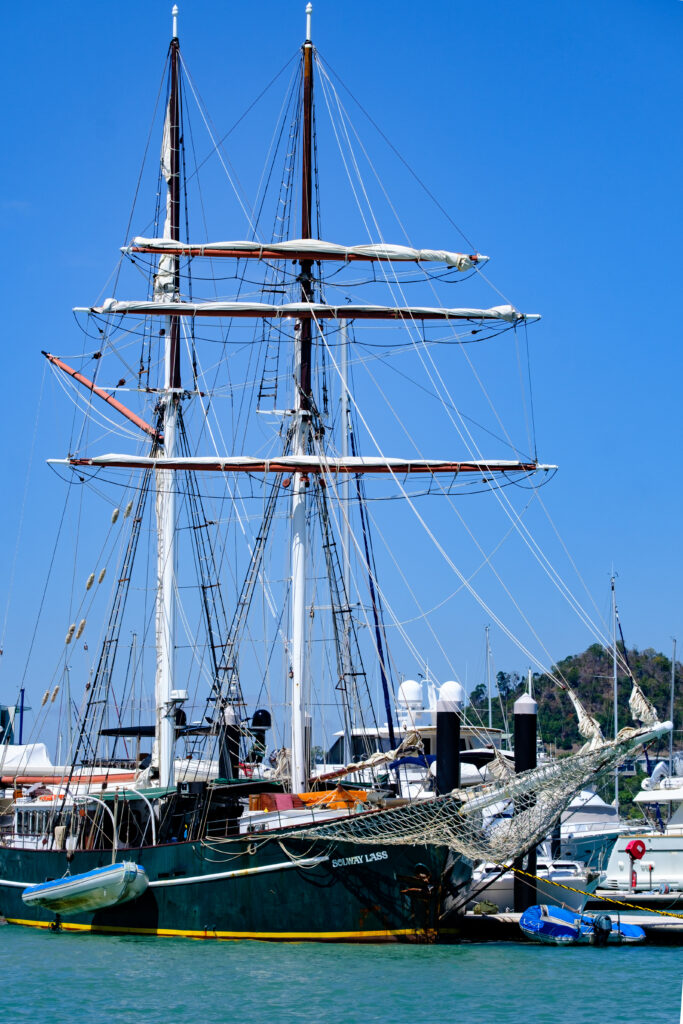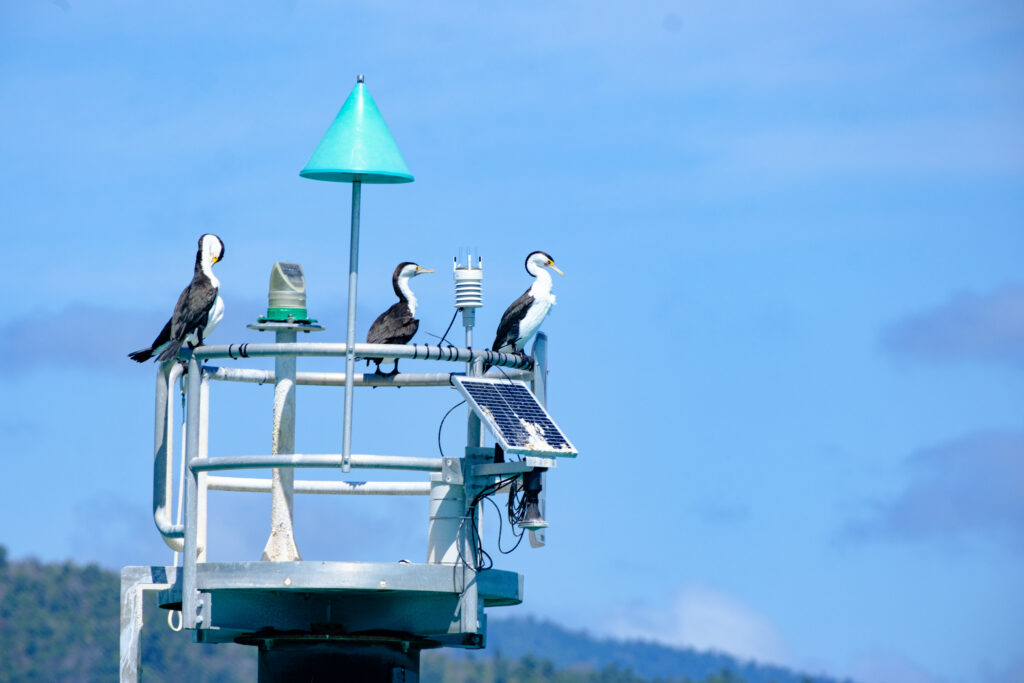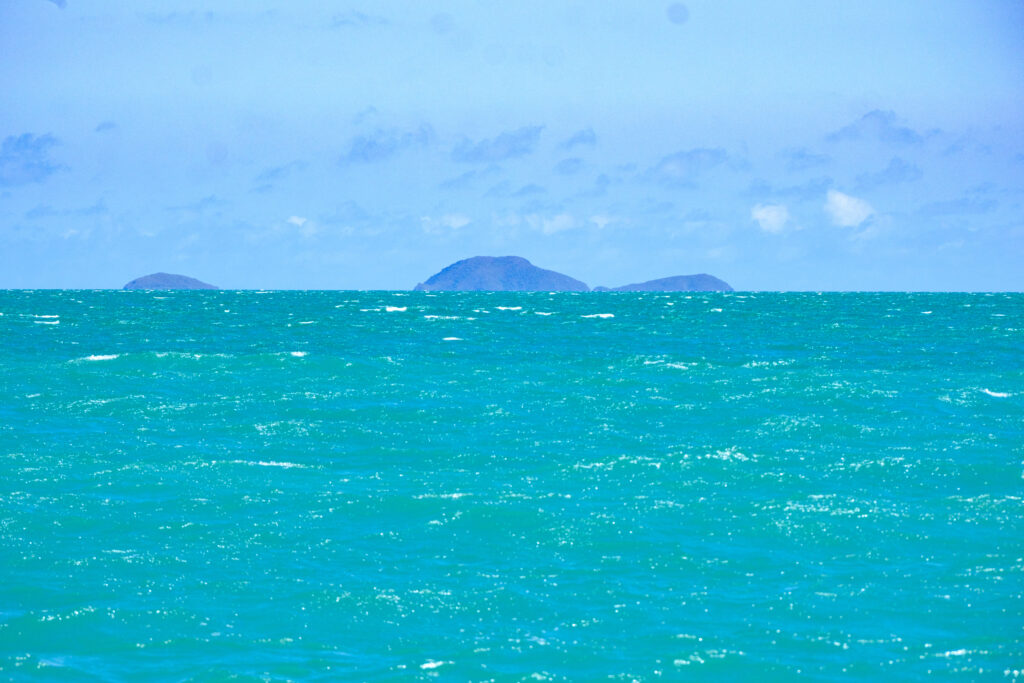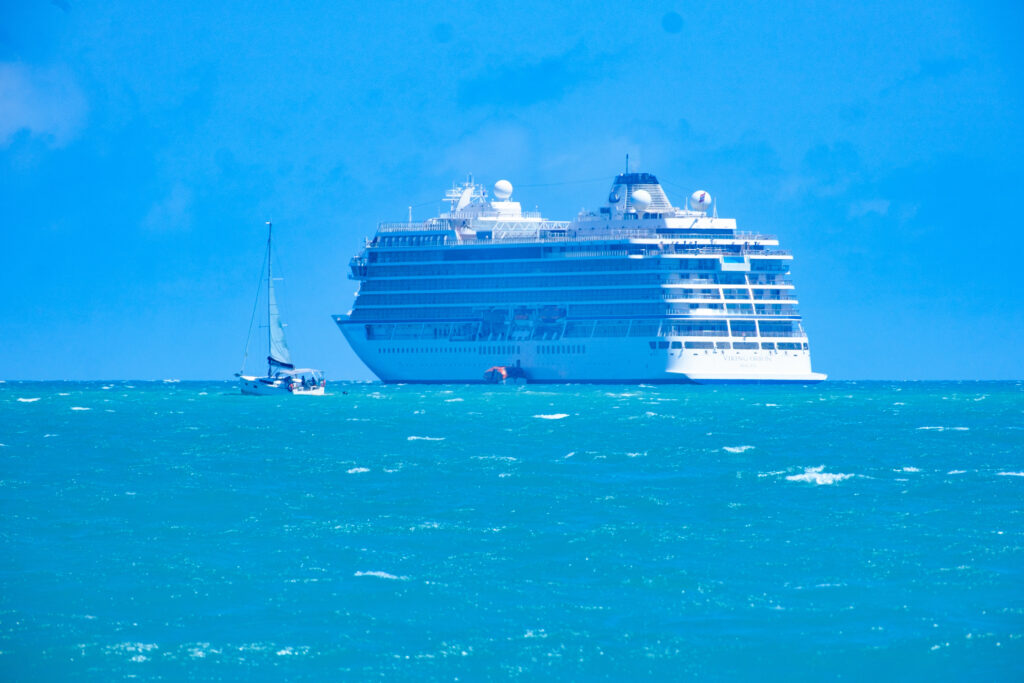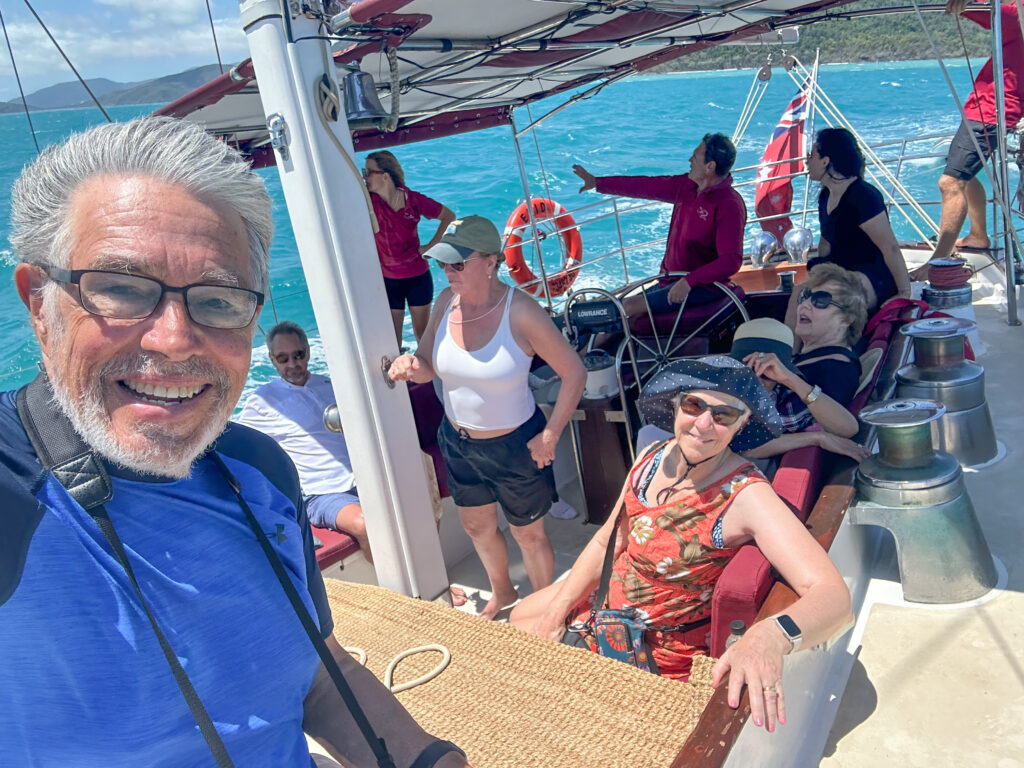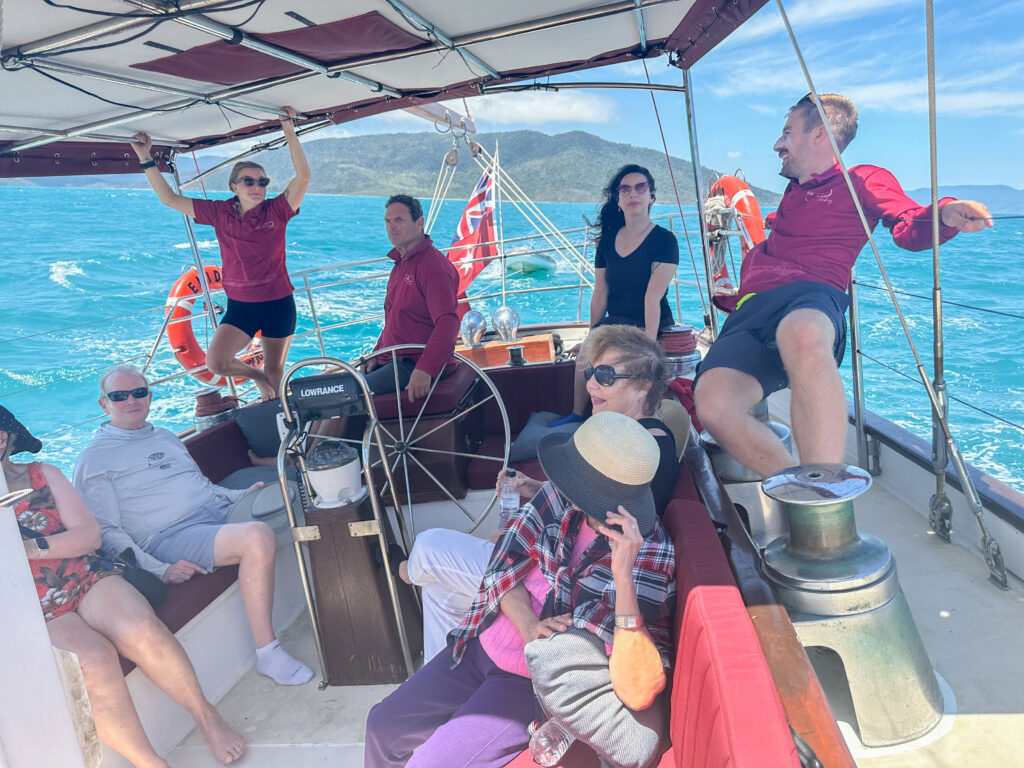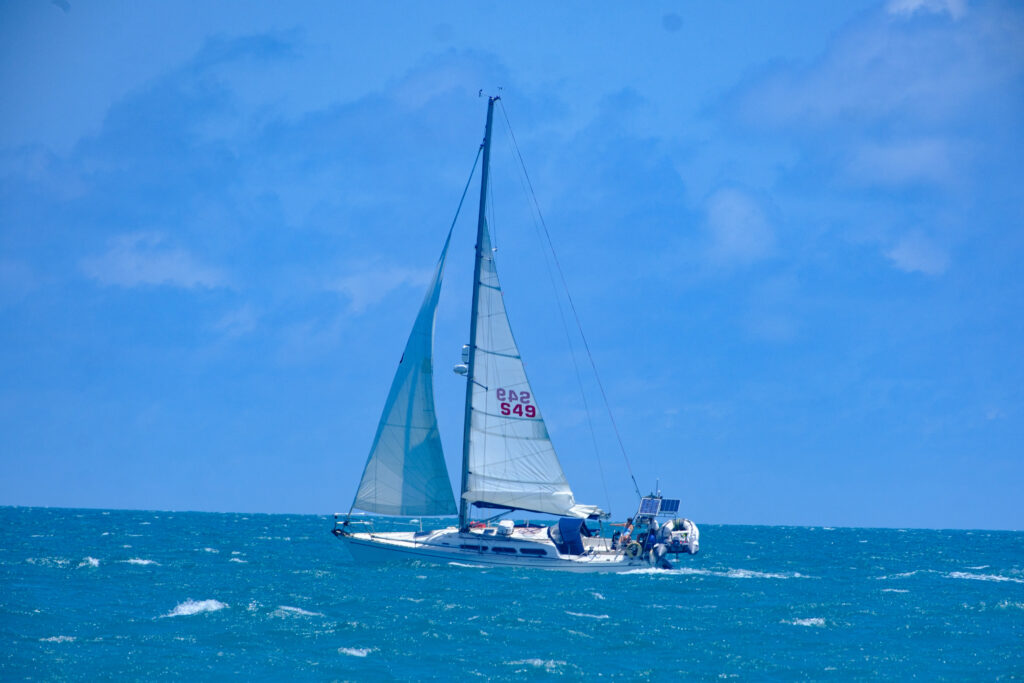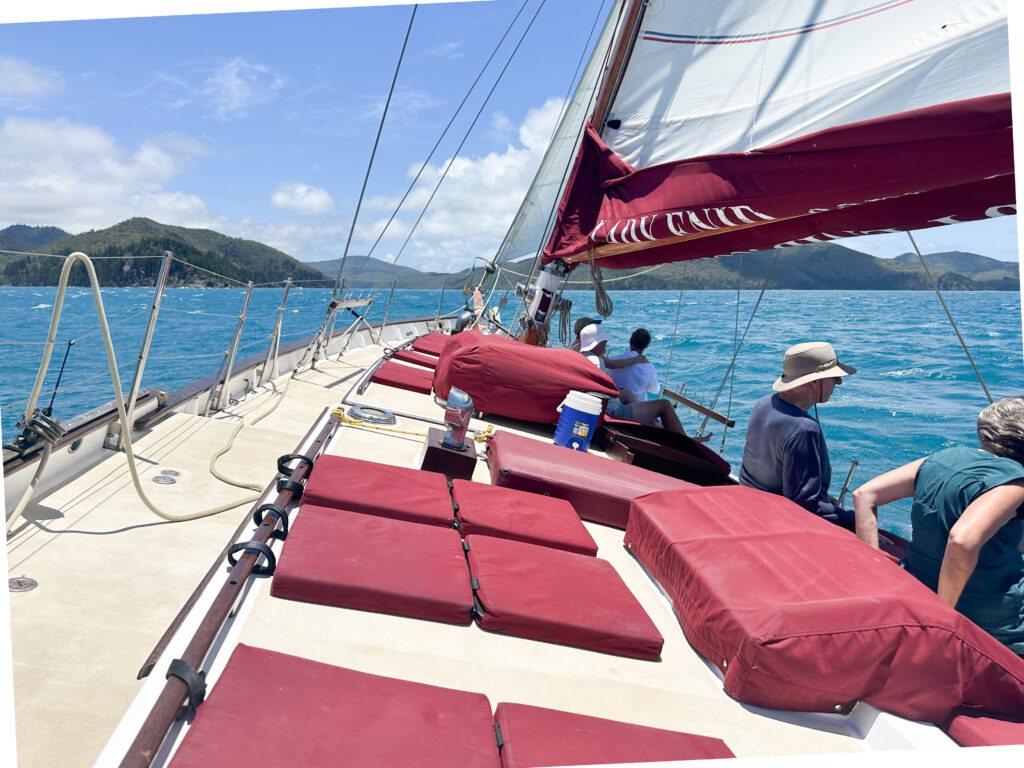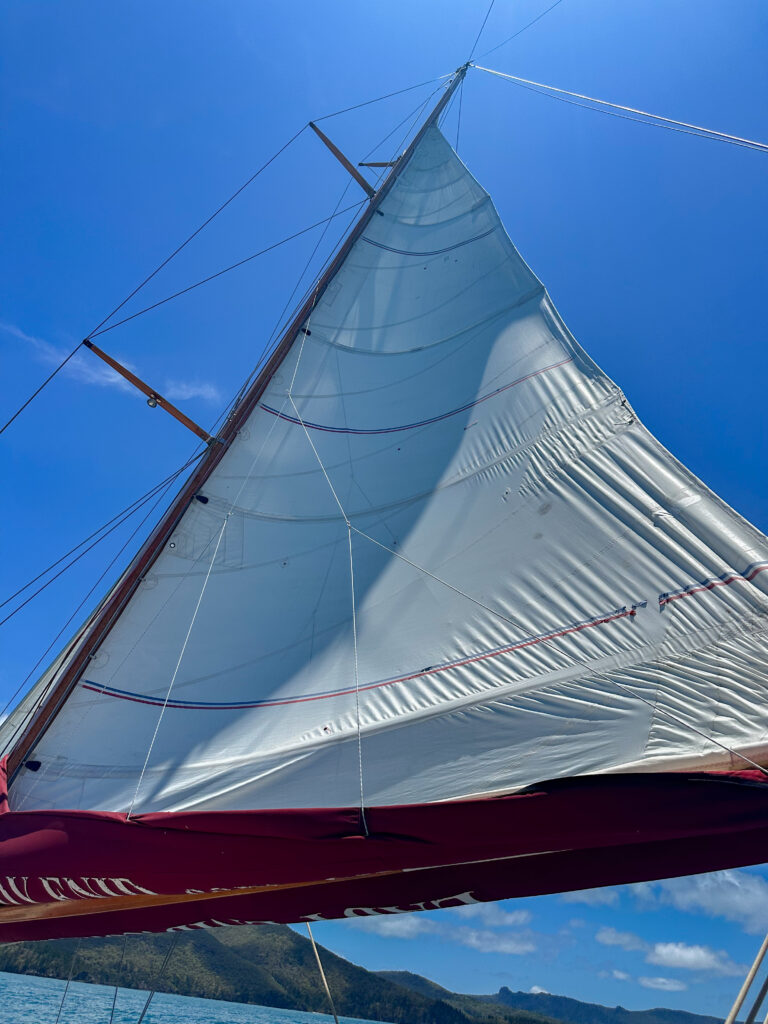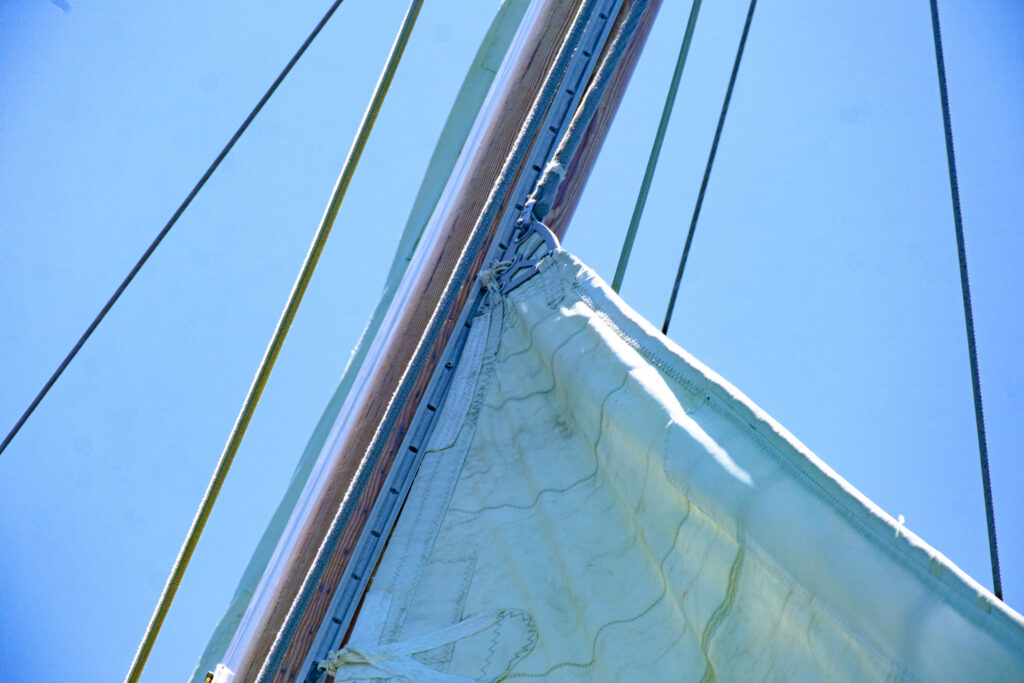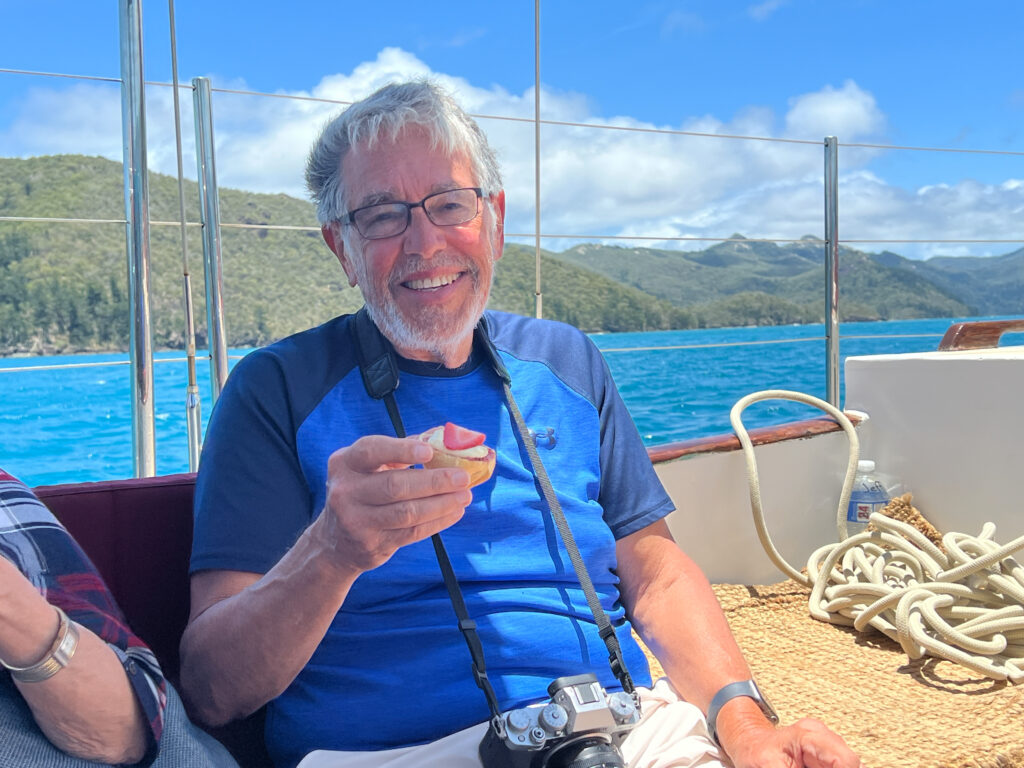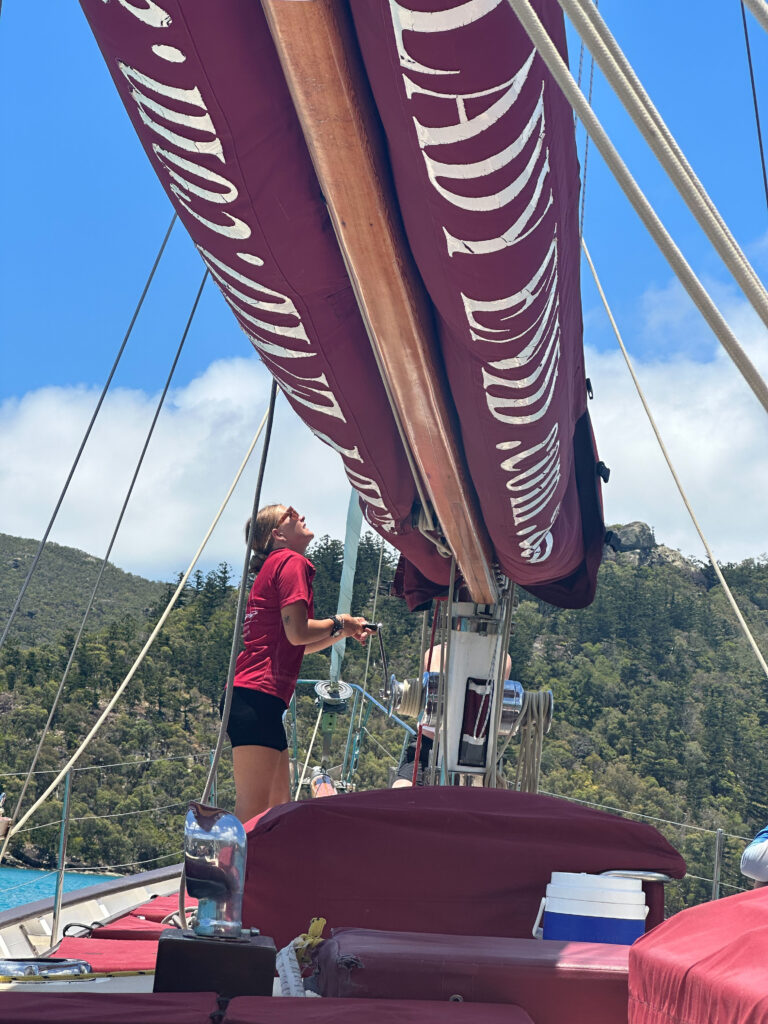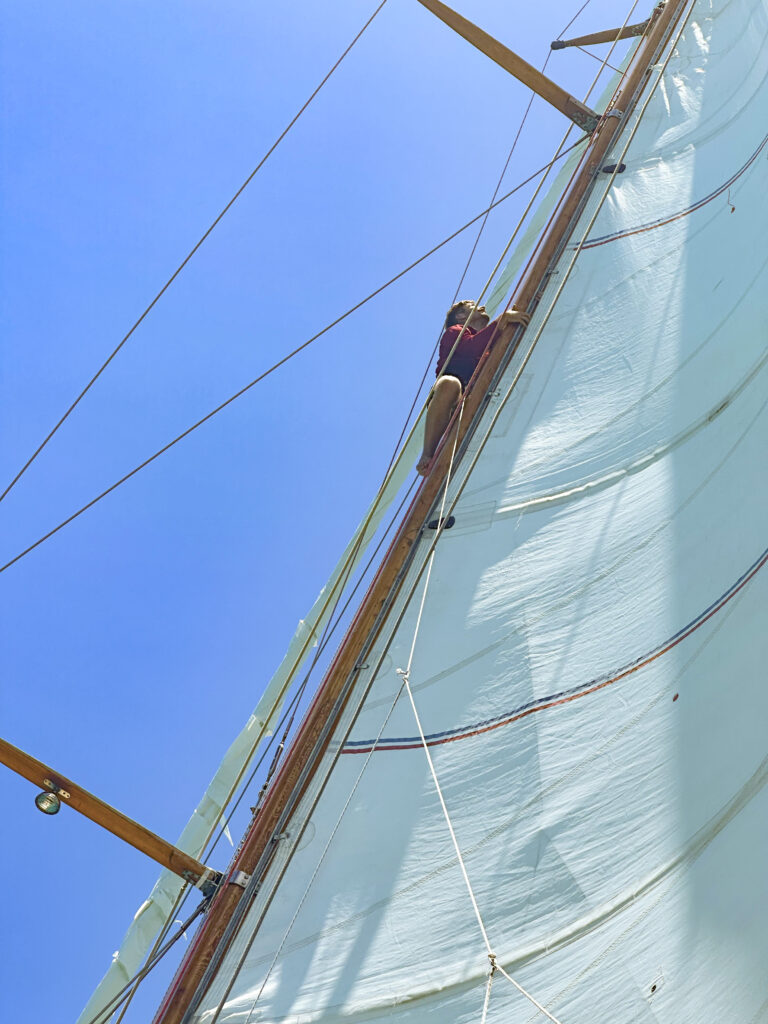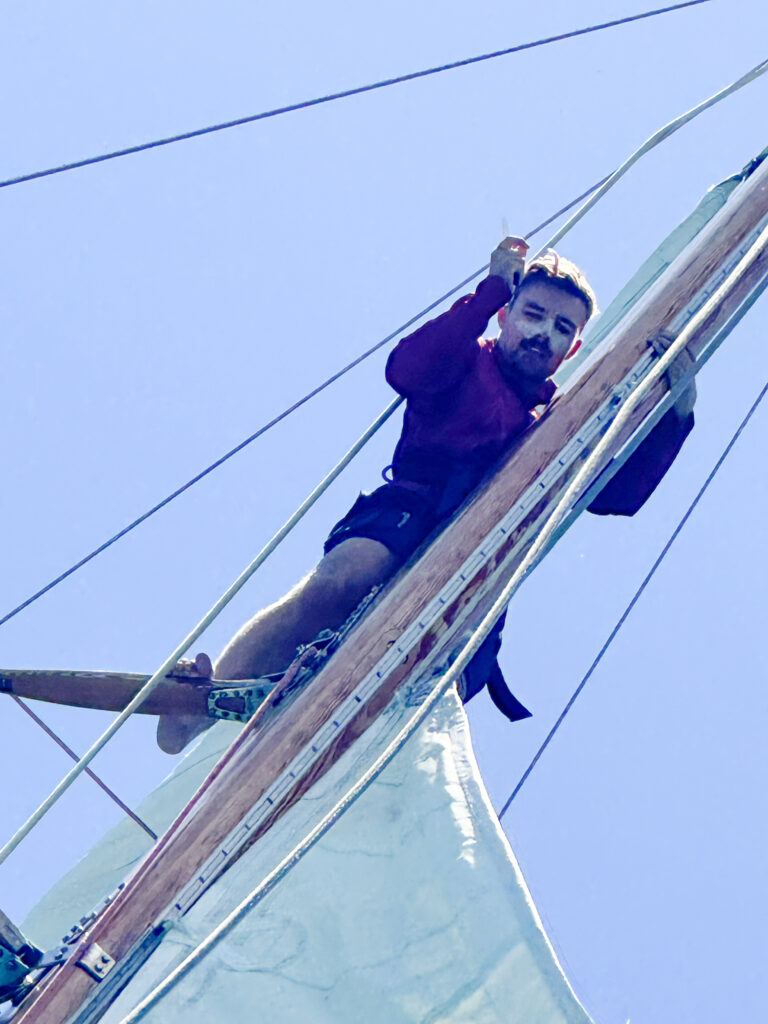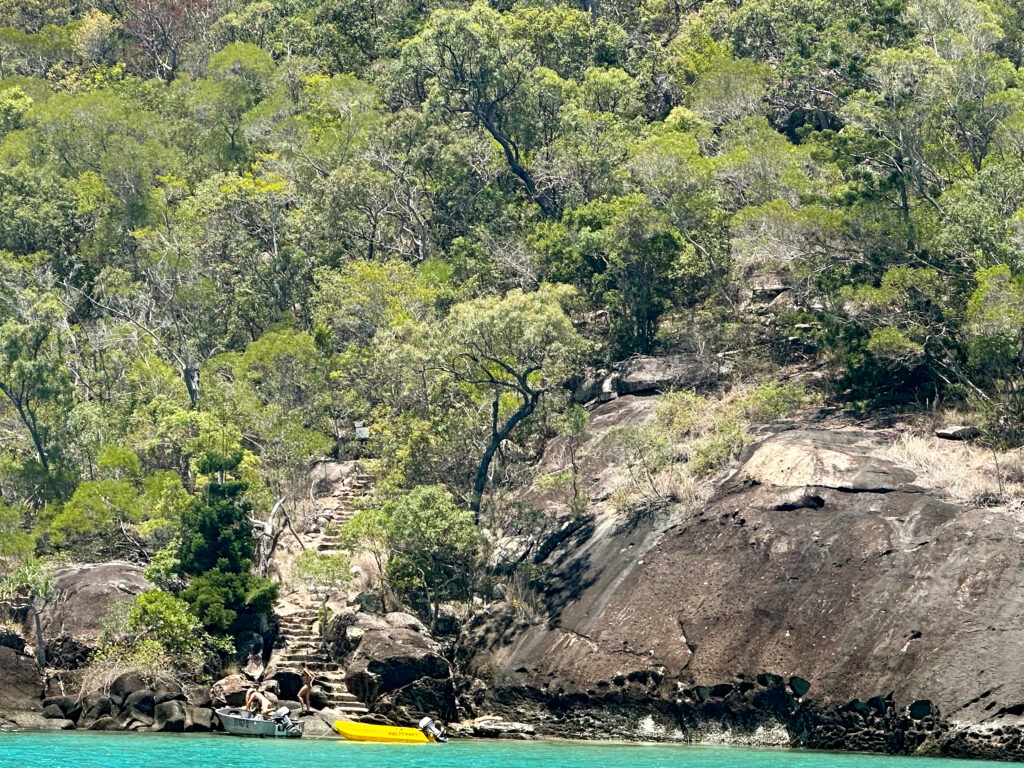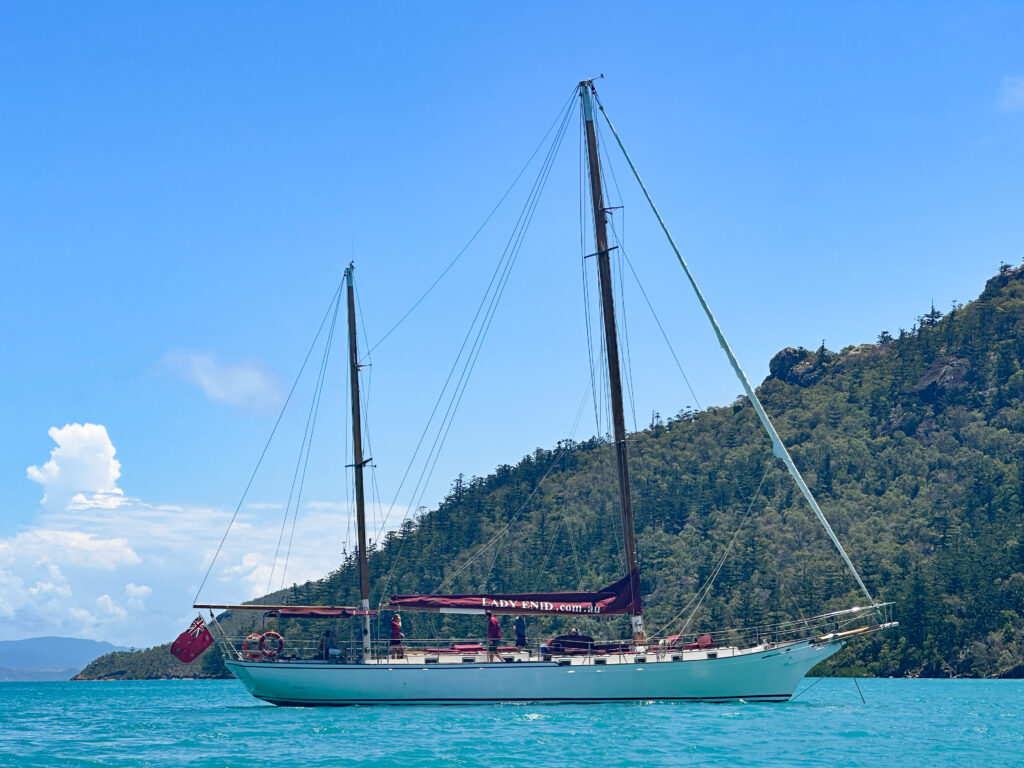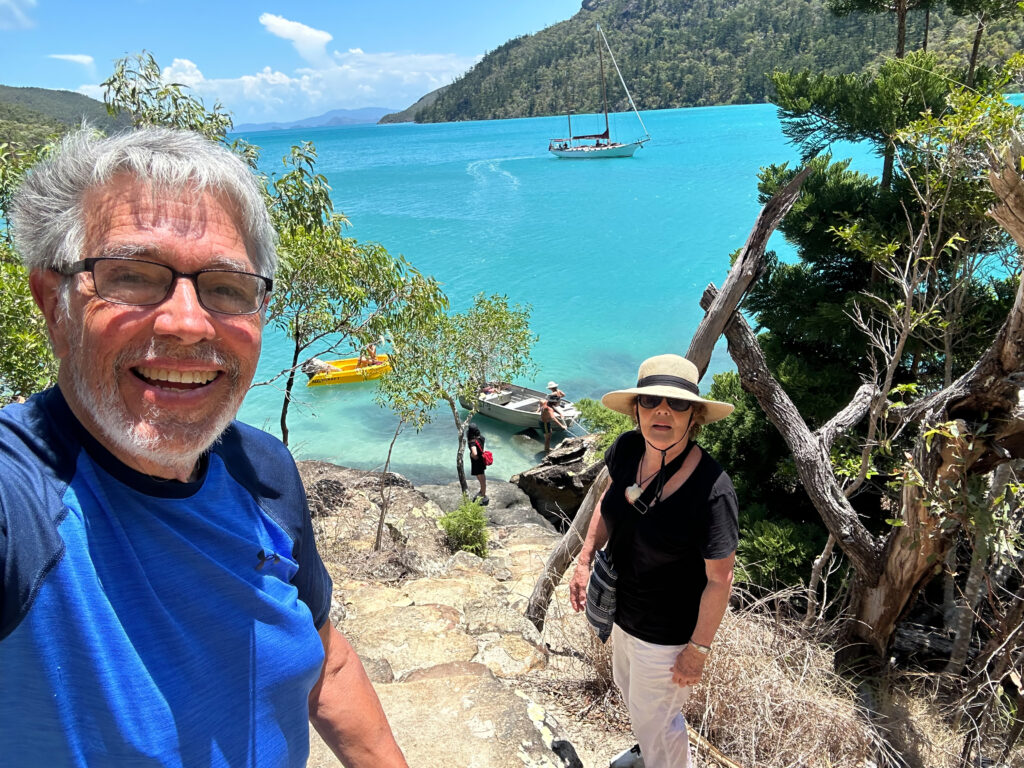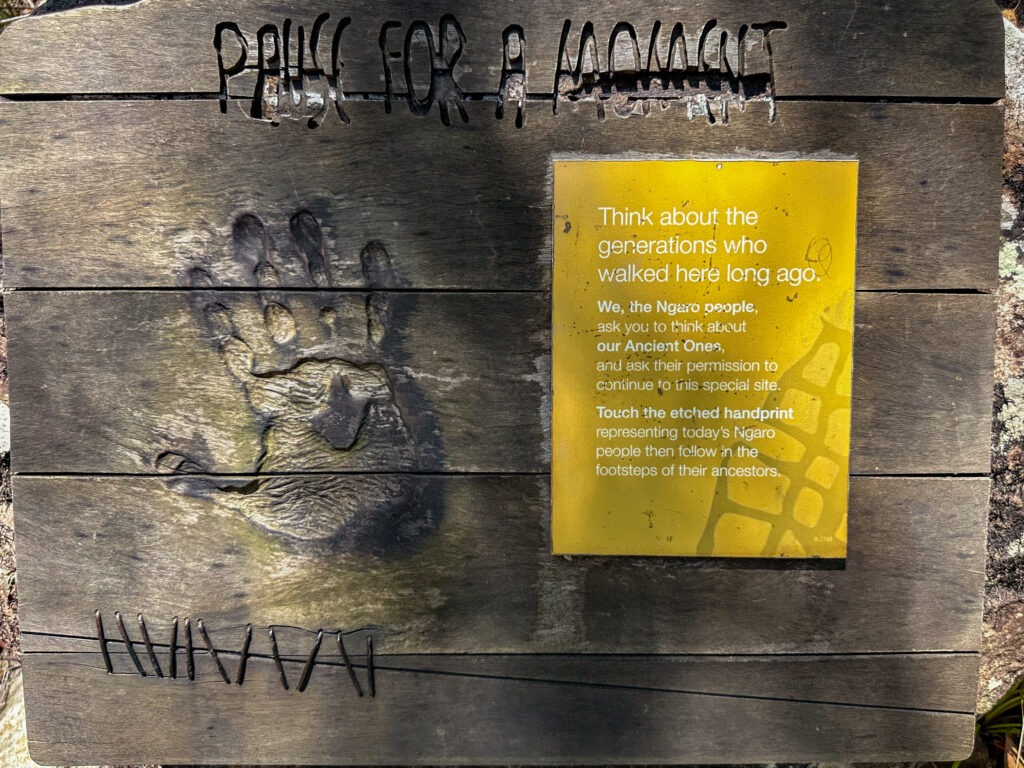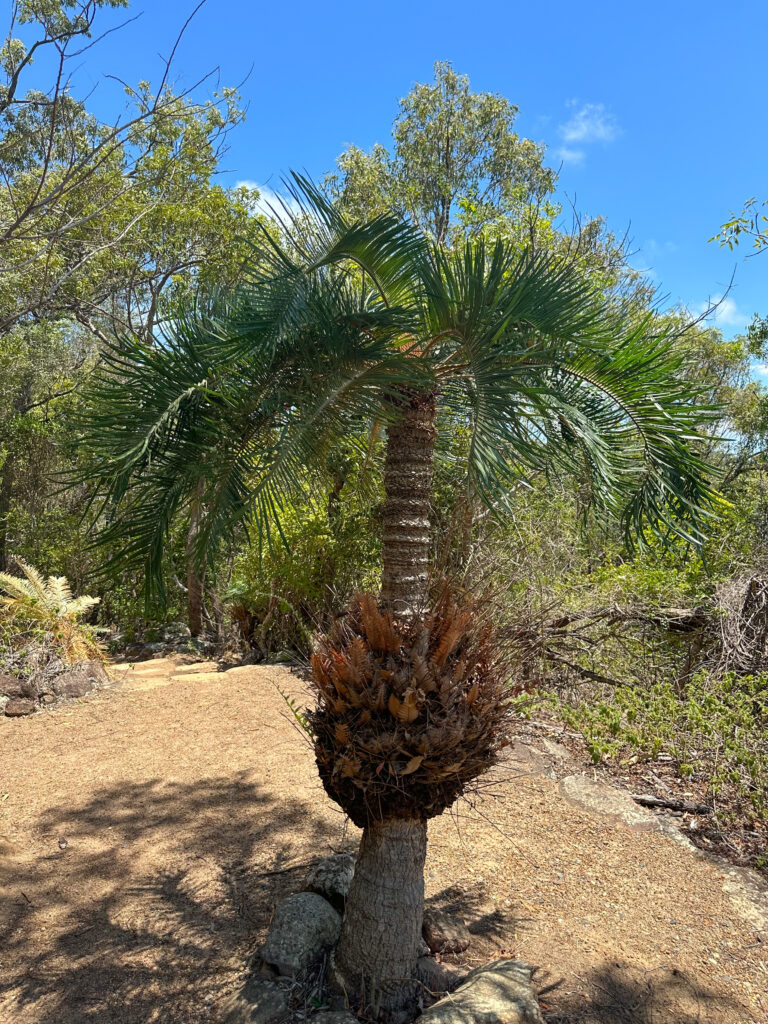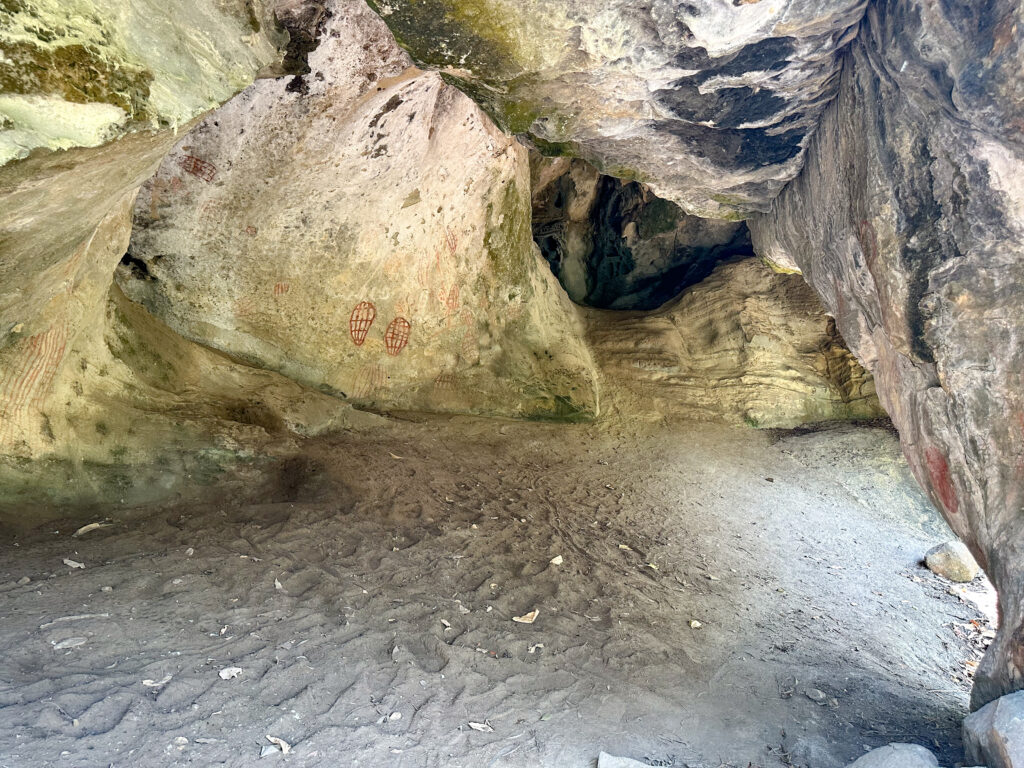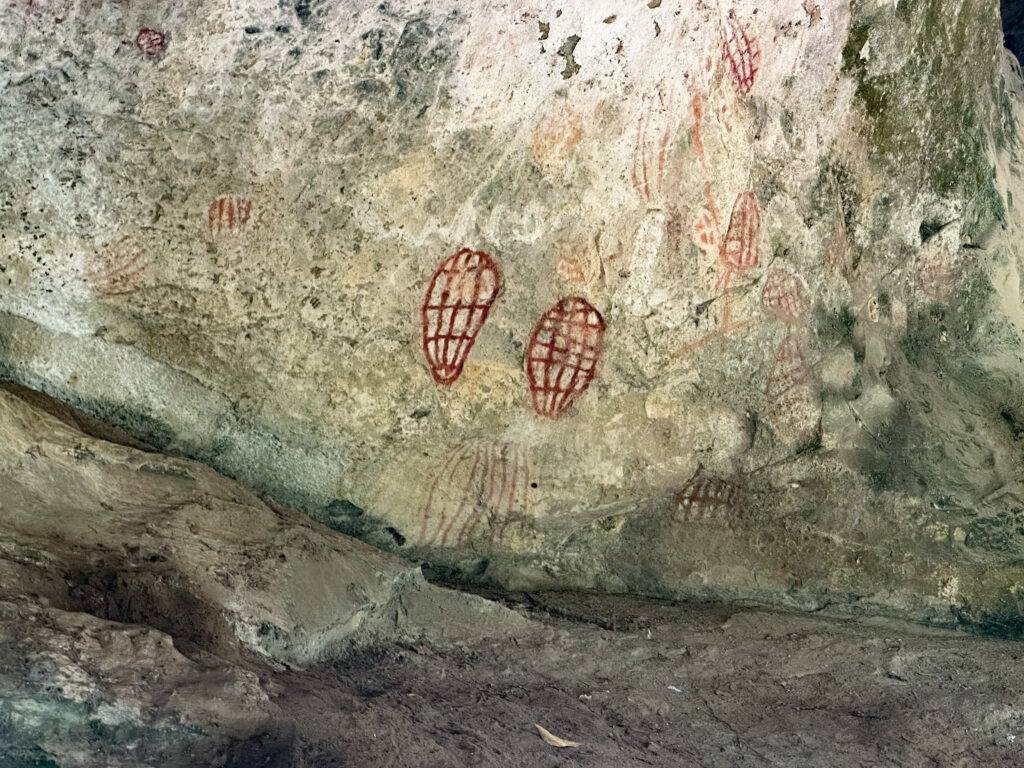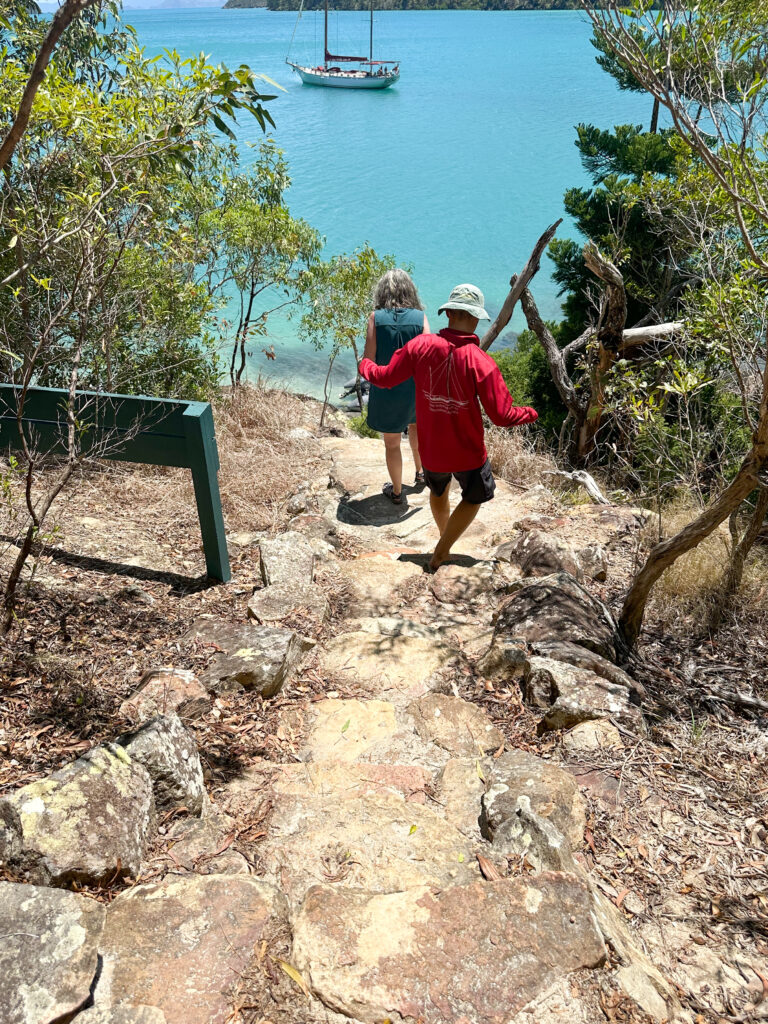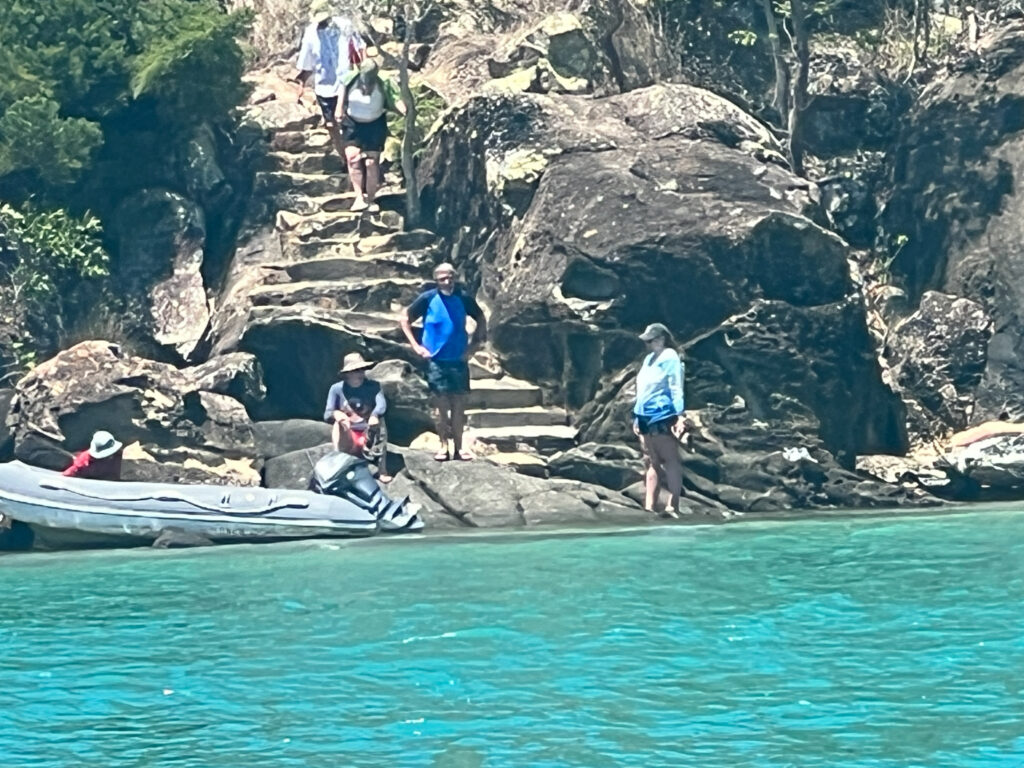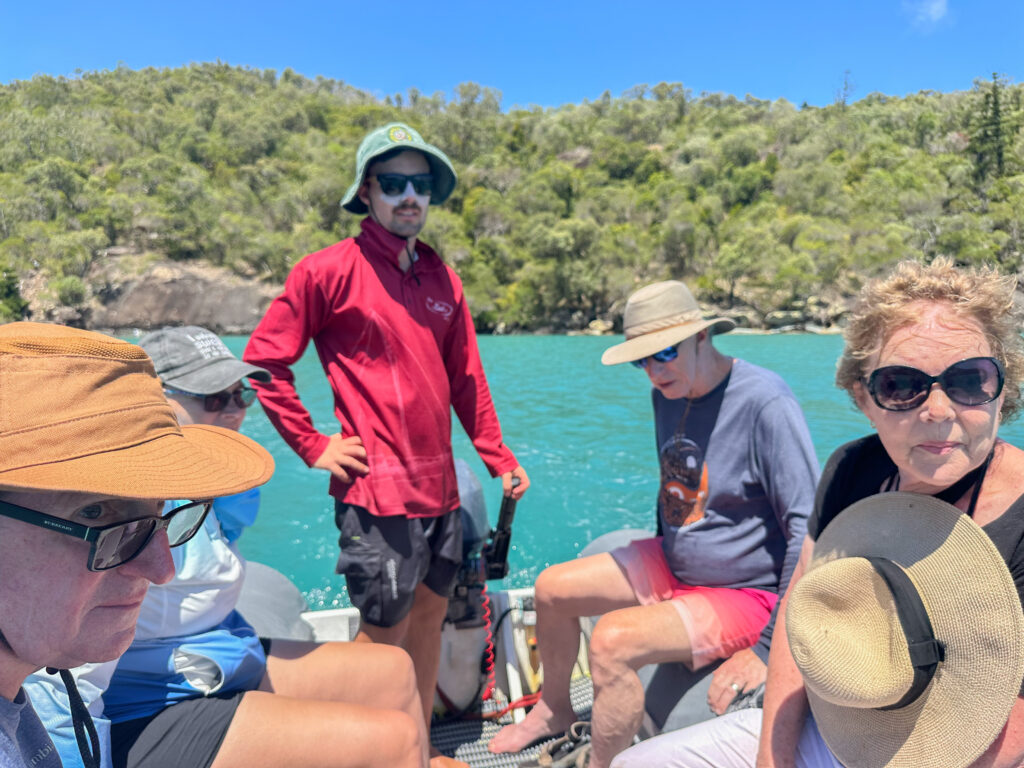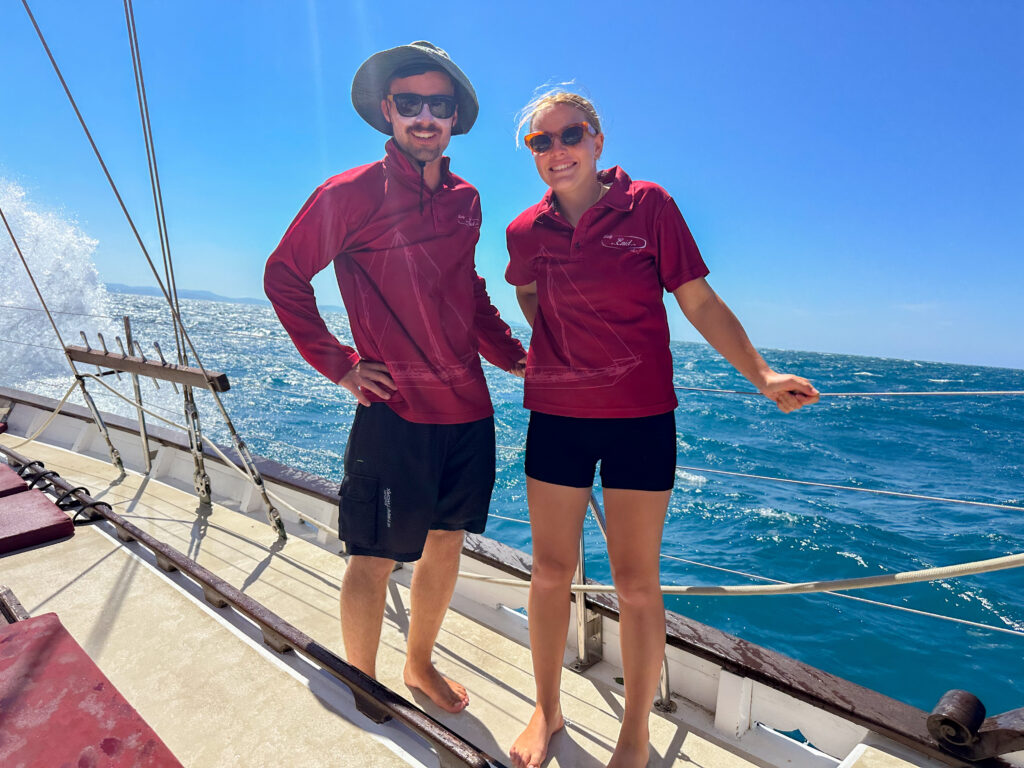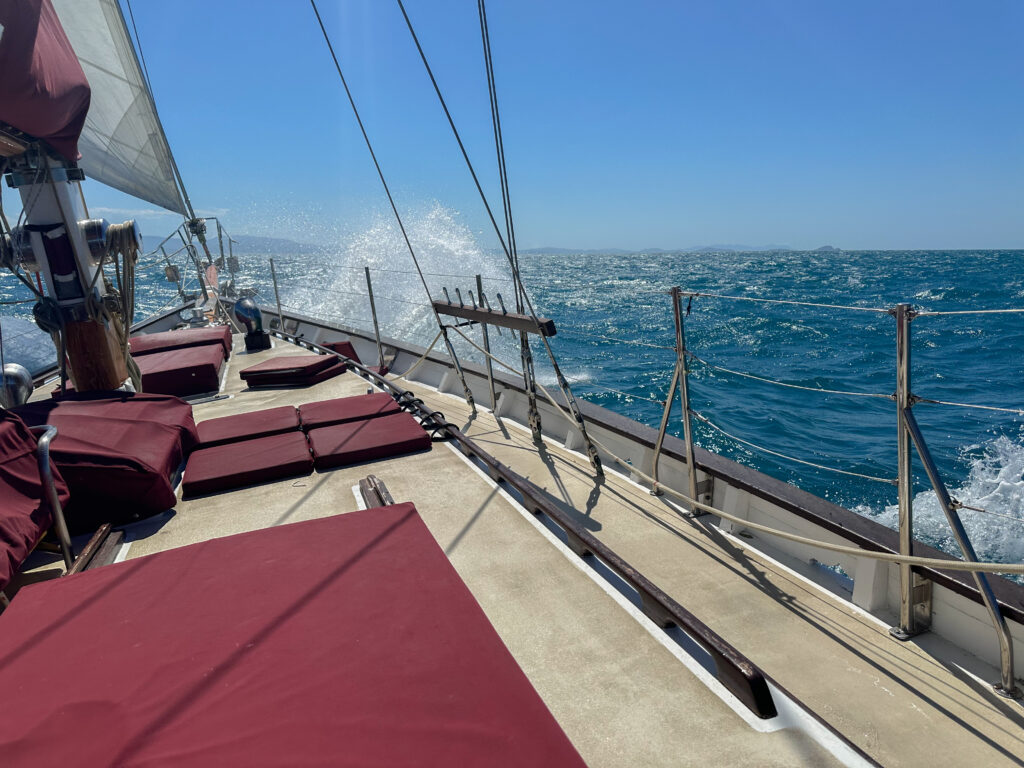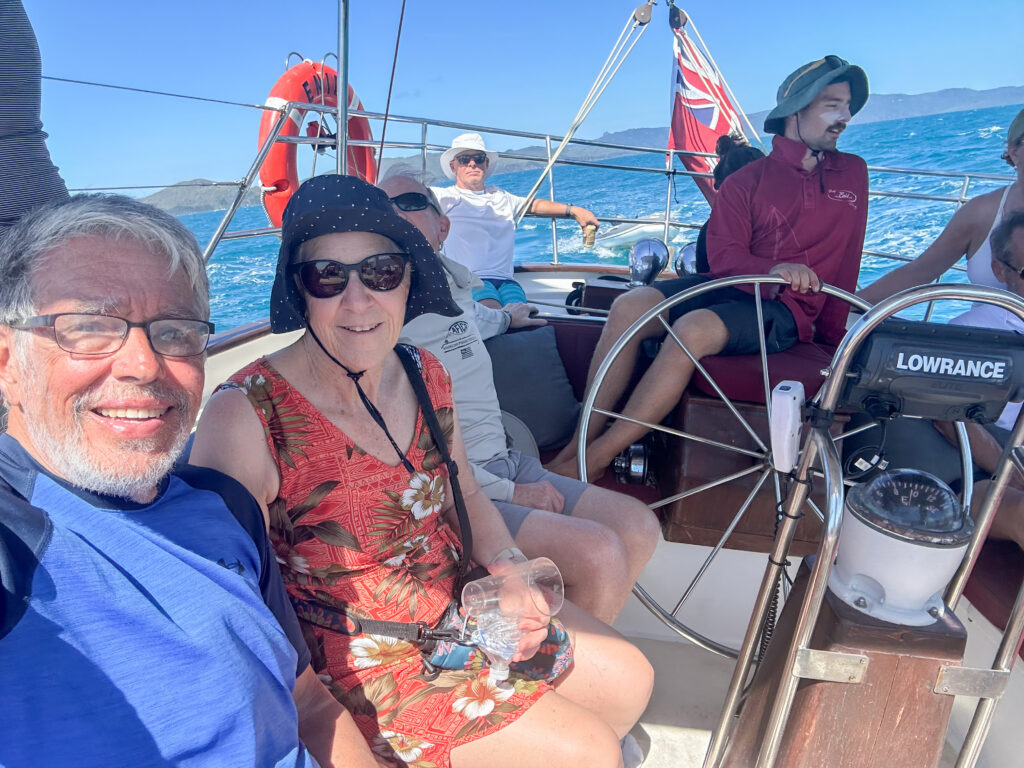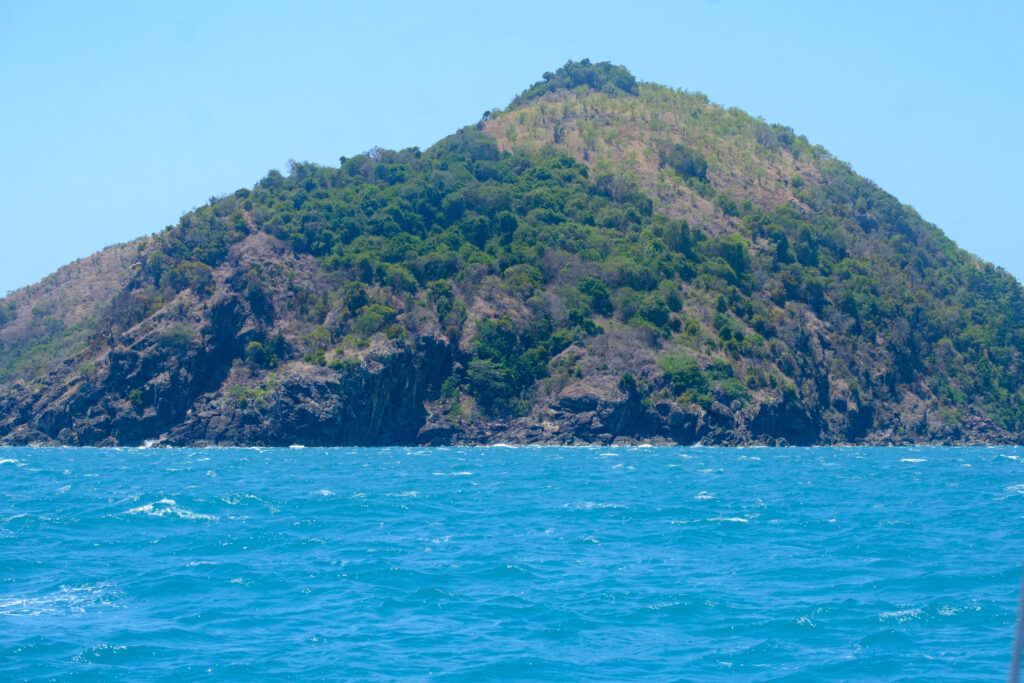We were scheduled for a repeat snorkeling session just like the one day-before-yesterday. Thankfully, Judy figured out that it would be an exact duplicate, so we switched at the last minute to the Whitsundays Yacht Experience. This tour promised a sailing experience (you know, sails and wind) plus swimming and snorkeling and exploring to see aboriginal cave drawings.
The sailing part worked well. The Lady Enid is a 72-foot two-masted sailing boat capable of handling 24 passengers in comfort. The day turned out to be sunny, warm and windy. Our captain estimated the wind at 20 kts and my guess was we were seeing 3 to 4-foot waves. The motion of the boat was lively and there was a pretty good tilt toward the leeward side of the boat.
All those statistics are important to us since last Spring, when we went yachting with Jeff and Carter in the British Virgin Islands, Jeff, thinking of his dottering old parents, booked a twin-hulled catamaran, rather than a monohull. Not so tippy and not so rocking. We never saw more than 10 Kts of wind so sailing was smooth. Now we’ve got our sea legs and are ready for more next time we go out with Jeff.
The Whitsunday Islands are not well defined but consists of roughly 74 islands in the chain named the Cumberland Islands by Captain James Cook on June 3, 1770. He named the the Whitsunday Passage to honor the day of Pentecost, Whit Sunday. So, we can say that we sailed the same waters that the H.M.B. Endeavor passed through 253 years ago. We were making 9 Kts; Cook averaged 3 Kts. No GPS; no auxiliary engine. What a guy.
We set out from Arlie Beach, a happening resort town. Our Captain has been sailing here for 26 years and virtually everything we saw has been built in that timeframe. The trip to the Nara Inlet on Hook Island took over two hours. The plan was to climb the cliff to see the aboriginal cave drawings, eat lunch, go snorkeling and sail home.
One small hitch: the mainsail wouldn’t come down. It would drop maybe 5 feet and stop. No amount of jiggling of the ropes worked. Finally, the first mate put on a harness and the gal serving lunch cranked him up to the top of the mast – what, maybe 50 or even 75 feet above the deck? He found a bolt that had come loose, blocking the sail and presto, down it came. This whole process took a good half hour.
We took the dingy ashore and climbed up a fairly steep hill to the caves. Judy elected to stay in the shade and avoid the climb, which was probably a good decision. One lady in our group fell in the drink getting out of the zodiac-style dingy, tripped and cut herself coming down the hill (lots of blood but no great damage) and then fell getting into the dingy. I caught her final fall: she landed on top of me and I fell on top of a fortunately smooth and soft rock. No damage done.
A light lunch was served. The captain ordered the sail raised to the point of the previous problem and off we went, presumably to the snorkeling beach. The captain, however, announced that due to the delay, the rough seas and the poor snorkeling conditions that we’d head home instead. Probably a good decision but I was looking forward to another underwater photo session.
Back on board the Orion, we attended a lecture on Sir Joseph Banks and other naturalists who sailed on Cook’s first two voyages. Cook had had enough of scientists and didn’t take any on the third trip. But Banks and the others contributed greatly to scientific knowledge and their findings are main displays in many natural history museums.
I never thought I’d say it, but after three eight-hour days on the tourist trail, snorkeling, hiking the rain forest and yachting, I’m ready for a day at sea. Judy and I had a late breakfast, took our constitutional on the Promenade Deck (now called the Jogging Track, although I’ve yet to see anyone go at more than a brisk walk pace, present typer included).
I’ve been reading The Fatal Shores about British practice of exporting 168,000 criminals to Australia beginning in the 1788 and continuing until the mid 1868. Many were convicted of minor crimes of property theft, driven by poor economic conditions. Brutal, inhumane, slavish and nothing to be proud of. We’re going to a lecture on the subject in a few minutes. There are four lectures scheduled for today, covering the Great Barrier Reef, the Quad consortium (India, Australia, Japan and the US), a port talk covering Mooloolaba, our destination for tomorrow and one on the importance of islands in world history. Mooloolaba was renamed by a real estate developer from the Near North Shore to Mooloolaba. Kinda like the renaming of Ship Pond to Onawa so as to attract more “Sports.”
We’re going to the other fancy restaurant tonight – the Chef’s Table. We did the Italian version a week or so ago.


